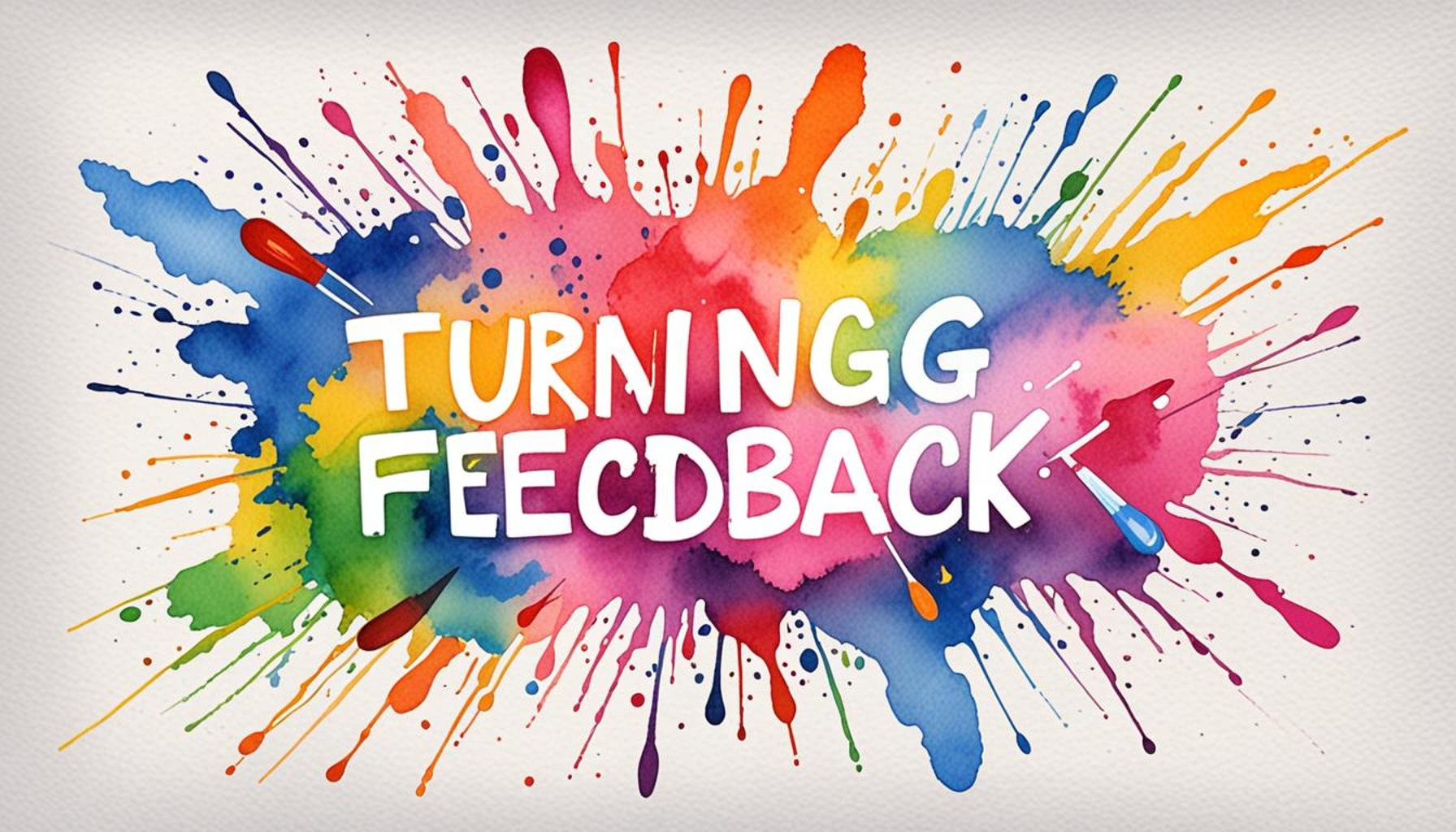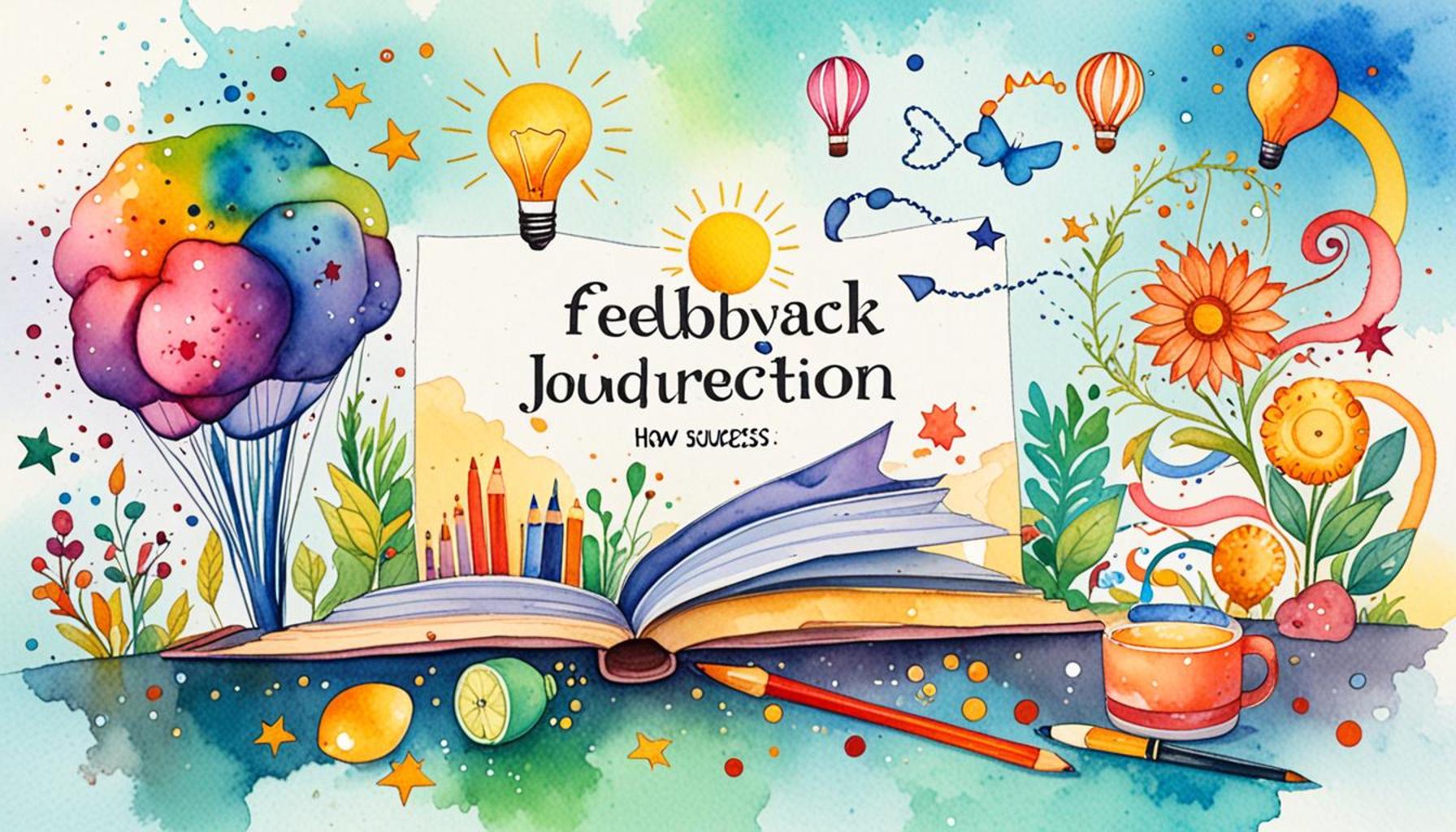Transforming Feedback into Action: Practical Techniques for Implementing Suggestions and Improving Results

Transform Your Approach to Feedback
In today’s fast-paced environment, the ability to transform feedback into actionable insights is crucial for growth and success across various sectors. Organizations in Nigeria and worldwide often face challenges when it comes to effectively harnessing feedback. This struggle can lead to stagnation, missed opportunities for improvement, and a disconnect between management and team members. However, by implementing practical techniques, you can turn criticism and suggestions into remarkable results that propel your organization forward.
Consider these key strategies for implementing feedback:
- Active Listening: Actively listening involves more than just hearing what someone says; it requires engaging with the speaker. This means maintaining eye contact, nodding in acknowledgment, and asking clarifying questions to ensure understanding. For instance, a manager who asks their team, “Can you elaborate on the challenges you face with the new software?” shows an openness to understanding and addressing specific concerns.
- Prioritizing Feedback: Not all feedback is created equal. It’s important to differentiate between urgent feedback—such as a safety issue—and constructive criticism that may not require immediate action. For example, feedback suggesting changes to a product design may be important for long-term success but can be addressed in the next product cycle. Use a simple matrix to categorize feedback into urgent, important, and low priority to streamline your response efforts.
- Creating Action Plans: Once feedback is received and prioritized, the next step is to develop specific action plans detailing how to implement the suggestions. This could involve setting measurable goals and timelines, assigning responsibilities, and scheduling regular check-ins to assess progress. An example would be a sales team creating a plan to address customer complaints by training on resolving issues within 48 hours.
Understanding how to effectively process and utilize feedback is essential for any organization. It not only fosters a culture of improvement but also enhances team dynamics and productivity. For instance, when educators incorporate student feedback into their teaching methods, it often leads to higher academic performance and student engagement. Feedback can also shed light on biases in the education system, allowing for changes that create a more equitable learning environment.
Moreover, organizations that actively seek and apply feedback are seen as more innovative and responsive to their stakeholders. This approach not only strengthens relationships but also contributes to a positive work culture, attracting talent and keeping the best employees. An organization that listens and adjusts according to feedback is likely to see higher employee satisfaction and lower turnover rates.
In this article, we will explore various practical techniques for collecting, analyzing, and acting on feedback to ensure continuous progress. Companies that unlock the potential of feedback can navigate challenges more effectively and watch their results soar. By embracing these techniques, any organization in Nigeria can look forward to a more dynamic and successful operational future.

CHECK OUT: Click here to explore more
Harnessing the Power of Feedback
Transforming feedback into actionable results is a journey that begins with a structured approach to understanding and valuing the perspectives of others. In Nigeria’s evolving corporate landscape, where competition is fierce and innovation is essential, mastering the art of feedback can be a game-changer. Feedback comes in various forms—be it from customers, employees, or stakeholders—and equally diverse is its potential to catalyze improvement. Therefore, developing a systematic approach to feedback implementation is paramount for enhancing overall performance.
To effectively transform feedback into action, it is imperative to adopt a comprehensive feedback loop that involves several critical steps:
- Encouraging Open Dialogue: Cultivating an environment where team members feel safe to voice their opinions is foundational. Organizations should encourage open dialogue through methods like suggestion boxes, regular team meetings, and anonymous surveys. For instance, a Nigerian telecommunications company could host monthly feedback forums where employees share insights without fear of retribution, fostering a culture of transparency.
- Using Technology for Feedback Collection: In today’s digital age, leveraging technology can streamline the collection of feedback. Using platforms such as Google Forms or specialized feedback management software enables organizations to gather insights systematically. By incorporating feedback apps, a local startup can easily track client satisfaction and swiftly identify areas for improvement.
- Analyzing Feedback Trends: Once the feedback is collected, it’s important to analyze the data to identify common themes or trends. This can be achieved through qualitative methods like focus groups or quantitative approaches using statistical analysis. For example, a school can analyze student feedback over multiple semesters to recognize patterns in curriculum effectiveness, which can inform academic strategy.
The impact of effectively utilizing feedback extends beyond mere operational enhancements; it encompasses employee morale and customer loyalty as well. For instance, organizations that embrace staff suggestions not only foster a culture of innovation but also see increased employee engagement. Studies have shown that when employees perceive their voices being heard, they are likely to be more productive and less likely to leave for other job opportunities.
Furthermore, engaging with customer feedback can lead to significant business improvement. By understanding customer preferences and pain points, organizations can refine their services or products to align more closely with market demands. Companies, particularly in Nigeria’s growing ecommerce sector, that utilize customer reviews to iterate on their offerings see a notable increase in client retention and satisfaction.
Ultimately, success in transforming feedback into action is reliant on a collective commitment to continuous improvement. By embedding a strong feedback culture within their organizations, leaders can not only navigate the complexities of the current marketplace but also pave the way for long-term growth and sustainability. As we delve deeper into specific techniques and strategies in the subsequent sections, it becomes evident that the journey of turning feedback into tangible results is both achievable and essential.
Transforming Feedback into Action
In today’s fast-paced environment, the ability to transform feedback into actionable insights is critical for success. Organizations that effectively implement feedback mechanisms not only enhance their operational efficiency but also foster a culture of continuous improvement. Here we explore practical techniques that facilitate this transformation.
1. Establish Clear Channels for Feedback
Creating approachable and well-defined channels for feedback ensures that all stakeholders, including employees and customers, feel empowered to share their suggestions. This can be accomplished through regular surveys, suggestion boxes, or digital platforms. It’s essential that these channels are easily accessible and promote open communication.
2. Analyze and Prioritize Feedback
Once feedback is collected, it is crucial to categorize and prioritize it based on impact and feasibility. This step not only allows for a systematic approach to feedback management but also ensures that the most pressing issues are addressed first. Utilizing software tools that specialize in feedback analysis can greatly streamline this process.
3. Implement Changes Responsively
After identifying actionable feedback, taking immediate action is vital. Communicating the changes made from suggestions not only demonstrates responsiveness, but it also encourages further engagement from stakeholders. This fosters a sense of ownership and accountability among team members, reinforcing the importance of their input.
4. Monitor and Measure Outcomes
Implementing changes is just the beginning. Continuous monitoring of the outcomes related to the feedback transformation is essential to measure success. Establishing key performance indicators (KPIs) linked to the changes made can provide valuable insights into the effectiveness of the implementation process. This data can further inform future improvements.
5. Promote a Feedback Culture
Lastly, creating a culture that values feedback as a cornerstone of organizational growth cannot be understated. Regular training sessions and workshops can help cultivate an environment where feedback is not only welcomed but actively sought after.Using these techniques, organizations can truly transform feedback into actionable steps, thereby enhancing results and fostering a culture of innovation and improvement. By engaging stakeholders in this manner, companies not only drive performance but also create a more cohesive and motivated workforce.
| Feedback Techniques | Key Benefits |
|---|---|
| Establish Clear Channels | Fosters communication and encourages input from everyone |
| Analyze & Prioritize | Ensures that resources are directed toward impactful changes |
| Implement Changes Responsively | Builds trust and encourages further engagement from stakeholders |
| Monitor & Measure Outcomes | Provides valuable insights for continuous improvement |
| Promote a Feedback Culture | Encourages a sense of ownership and accountability among team members |
YOU MAY ALSO LIKE: Read read another article
Implementing Feedback: From Ideas to Action
Once feedback has been collected and analyzed, the next critical phase is transforming those insights into actionable strategies. This requires a well-defined process that not only focuses on immediate improvements but also fosters a culture of long-term development. Here are several practical techniques that organizations in Nigeria and beyond can adopt to ensure feedback leads to meaningful action.
- Prioritizing Areas for Improvement: Not all feedback holds equal weight. To make actionable decisions, organizations should prioritize suggestions based on factors such as impact, feasibility, and alignment with strategic goals. For instance, a Nigerian bank receiving feedback about long wait times at branches might choose to implement digital bank services first, as this aligns with their goals of enhancing customer experience while also addressing a critical pain point.
- Creating Action Plans: Once priorities are established, it’s essential to develop clear action plans that outline specific steps to address the feedback. This includes setting measurable objectives, delineating responsibilities among team members, and establishing timelines. A local manufacturing company, for example, could draft a plan to improve safety standards in response to employee feedback by implementing monthly safety drills and creating safety committees by the end of the quarter.
- Establishing Feedback Champions: Designating individuals or teams as ‘feedback champions’ can facilitate continuous engagement with the feedback loop. These champions are responsible for advocating the importance of feedback in their departments, assisting in data collection, and ensuring that action plans are communicated and executed effectively. This practice enhances ownership and accountability, fostering an environment where feedback is not just a one-off activity but an integral part of the organizational culture.
Furthermore, continuous training and development play a crucial role in reinforcing the importance of feedback in driving improvement. Organizations in Nigeria should consider investing in training programs that equip employees with the skills necessary to provide constructive feedback and implement changes effectively. Workshops, seminars, or online courses can introduce the latest trends in feedback management and actioning techniques, ultimately empowering employees to take initiative.
One innovative approach some companies have implemented is the use of gamification to encourage feedback participation and engagement. By introducing a point system where employees earn rewards for providing valuable suggestions and participating in feedback sessions, organizations can increase involvement significantly. This not only motivates employees to be more engaged in the feedback process but also aligns their contributions with the company’s goals, creating a shared sense of purpose.
In addition to internal practices, organizations should also actively share their progress in implementing feedback with external stakeholders. Transparency regarding how customer suggestions have led to changes can boost trust and loyalty. For instance, an online retail platform could run campaigns highlighting customer-driven updates, such as enhanced website features, based on user feedback. This not only improves customer satisfaction but also showcases a commitment to listening and adapting.
Ultimately, the process of implementing feedback is not linear; it is an ongoing cycle that requires diligence and dedication. By integrating these techniques into their operations, businesses in Nigeria can expect enhanced performance, better employee morale, and improved customer relationships. As we continue to explore various facets of feedback transformation, the emphasis remains on establishing a robust framework that allows organizations to thrive in an increasingly competitive environment.
ADDITIONAL INSIGHTS: Expand your understanding here
Conclusion: The Path Forward in Feedback Implementation
In an increasingly competitive business landscape, the ability to transform feedback into actionable strategies is paramount for organizations looking to enhance performance and strengthen relationships with both employees and customers. The techniques outlined, from prioritizing areas for improvement to creating comprehensive action plans, offer a roadmap for leveraging feedback effectively. Furthermore, the establishment of feedback champions ensures that the culture of listening and responding to suggestions becomes ingrained within the organizational fabric.
Continual investment in training and development for employees not only equips them to handle feedback constructively but also empowers them to take an initiative in driving improvements. The innovative use of gamification demonstrates that making feedback engagement a rewarding experience can significantly elevate employee participation and contribute to a more collaborative environment.
Moreover, transparent communication regarding how feedback has led to tangible changes fosters trust and loyalty among external stakeholders, thus enhancing overall customer satisfaction. By adopting these practices, businesses in Nigeria and beyond can create a vibrant feedback loop, one where suggestions are not merely heard but acted upon, leading to innovation and long-term success.
As organizations embark on this journey, it is crucial to remember that feedback implementation is a cyclical process—one that requires ongoing assessment and adaptation. Embracing this philosophy not only positions companies for immediate improvements but also paves the way for sustained growth in a rapidly evolving marketplace. The call to action is clear: transform feedback into meaningful actions, and watch your organization thrive.


